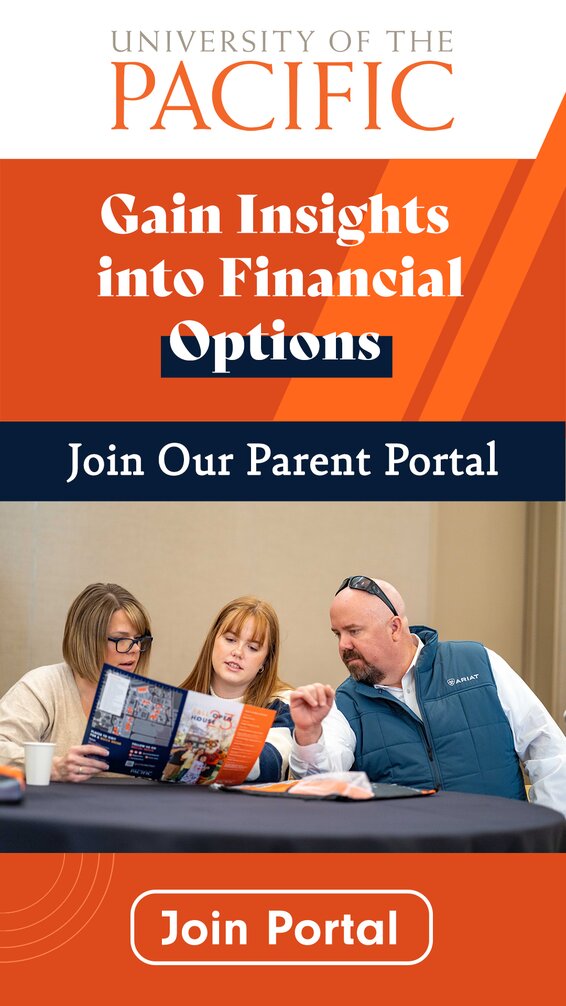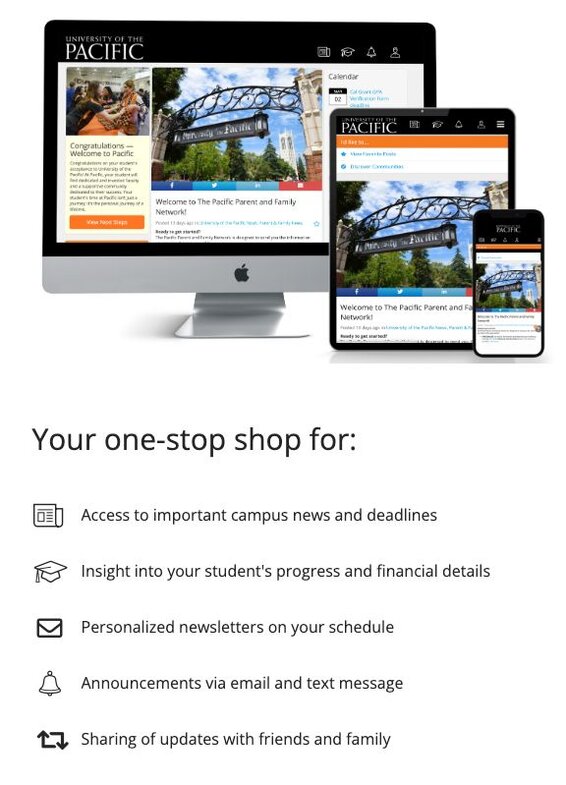How are you engaging students and their parents/guardians in the search, application, and acceptance stages? This action plan, divided into five levels, will help your team explore how to evaluate what you’ve currently put in the market—and adjust to include other influential family members.
 Level 1
Level 1Evaluating Your Current Engagement
Before we dive into strategies and tactics for engaging the entire family, it’s time to assess what you’ve done so far. While this step can be time intensive, it’s vital before moving on to advanced segmentation, engagement, and more.
What are your goals?
Pick a piece of communication you’ve sent in the last calendar year. What was the goal of the piece? Was it to build awareness of your institution’s brand, get prospective students to your website, increase applications, or something else?
Being able to assess your communications will help you develop purpose-driven touchpoints rather than inbox fluff.
How did your outreach perform?
Let’s continue, still moving forward with the piece you thought of for the above question — let’s see how it went. What were the key performance indicators (KPIs) for its success, and how was it tracked?
If you’re currently not tracking the performance of your outreach, doing so is an important part in deciding whether it’s working, and if you should change or cut a piece of communication.
The graph below is an example of things your team might be tracking in your outreach to students and families:
| Goal | KPIs |
|---|---|
| Brand Awareness Getting to Know Your Institution | Impressions, Reach, Social Media Mentions, Direct Traffic |
| Website Traffic Learning More Specifics About Your Colleges | Sessions, Page Views, Bounce Rates, Time on Site |
| Lead Generation Filling Out RFIs | Conversion Rate, Number of Leads Students! |
| Applications | Number of Started Applications, Number of Completed Applications, Visits to Application Page |
While there are many more goals your team could track, setting a goal and the KPIs for each of your communications will help you further analyze what’s working and what should be enhanced.
What can be enhanced to make it more successful?
Tracking month-to-month and year-to-year trends will help your team assess effectiveness of communications repeated every year (e.g., admissions guides, student- or parent/guardian-focused digital advertising campaigns).
Here are some starter questions to consider:
- Did this specific communication work for the time of year it was sent? Timing is everything, and it may be that a specific communication needs to be sent earlier or later in the funnel.
- Did one segment (e.g., college-specific communications) perform well over the others? Was one piece in a series more successful? You may see more engagement from students interested in particular colleges, and less from others.
A spreadsheet or analytics platform will help your team track what’s working and what will need to be assessed (more on that in later chapters). After a goal and KPI assessment, along with a list of enhancements, it’s time to discuss further segmentation.
In the next chapter, we’ll talk about segmentation and how to stand out against your peer institutions.
Get Expert Consulting
Encoura’s team of enrollment experts understands the challenges your team is facing. Get strategic feedback and expertise that helps you refine your strategies to make your class. To learn more about consulting with Encoura, reach out to us.
Get In Touch Level 2
Level 2Basic Segmentation for Student Engagement
Every piece of outreach you create isn’t made for every student you’re trying to recruit, and student communications won’t work as well for parents/guardians. In order to truly stand out and engage students and their families, it’s important to create intentional segments for your outreach.
Getting Started With Basic Student Segmentation
There are many ways to segment your communications, and it can feel overwhelming at first. When getting started, you should prioritize which segments make sense now, and which you can implement for future classes.
Consider starting by creating an outreach strategy for these basic student segmentations:
High School Year
Are you currently segmenting your outreach based on prospects’ high school years? What students want and expect from colleges as a sophomore will be different from their junior and senior years.
In-State and Out-of-State
For out-of-state students, telling a story about your institution – and city – will be different from the story you tell to local and regional prospective students.
Academic Interest
Once you know what major or academic area your prospects are interested in studying, you can segment your outreach to speak directly to classes, research, and career outcomes. Work with your academic departments to highlight what’s unique about their programs.
Reach the Entire Family on Top Platforms
With Encoura’s Digital Solutions, you can connect with students and parents/guardians where they’re spending the most time online.
Learn More Level 3
Level 3Diving Deeper Into Parent/Guardian Engagement
If your institution isn’t already diving into different ways to engage parents/guardians in their students’ college search experiences, now is the time.
Parents/guardians want to be involved in their children’s college decision-making.

Source: Eduventures 2025 Prospective Parent Research™
The Eduventures 2025 Prospective Parent Survey indicated that while 30% of parents/guardians are starting to think about the colleges their children will apply to in 10th grade; 44% of parents/guardians are thinking about it even earlier.
Similar to students, segmenting your communications for parents/guardians will help you stand out against your peer institutions and engage parents/guardians throughout the funnel.
Basic Segmentation for Parent/Guardian Communications
Involving parents/guardians in the next step or event is a great way to keep them involved – and segment your outreach further.
Next Step/Deadline Driven
Sometimes young students need a push from their parents/guardians to complete deadline-driven tasks, like paying their deposits. By keeping parents/guardians informed on upcoming deadlines, you can encourage them to take action on their children’s behalf.
Activity/Event Driven
Including parents/guardians in event-driven outreach, like campus visits, admitted student days, and other events on campus will keep your institution top-of-mind for this influential group. Consider specific activities for parents/guardians and include them in events with their future college students.
Engaging Parents/Guardians Outside of Emails
Parent/Guardian Portals, Specific Web Pages, and RFIs
Parent/Guardian portals are one way institutions are keeping this influential audience engaged through specific segmentation. While email is one way to push parents/guardians to this portal, highlighting it on your admissions website will help you grow your contact list.
Along with email and admissions website pushes, University of the Pacific is also promoting its parent/guardian portal in a set of digital ads, which you can see highlighted in the visual above.
Requests for information (RFIs) pages are a way to not only gain contact information for prospective (and admitted!) students, but to also send segmented messages to these influencers throughout the funnel.
Digital Advertising
Running digital advertising to prospective parents/guardians can keep them engaged in the process. As mentioned above, University of the Pacific uses digital advertising to drive traffic to its parent/guardian portal.


University of the Pacific drives traffic to its parent/guardian portal through strategic digital advertising.
Along with driving traffic to the parent/guardian portal, Pacific is running ads that address many of the concerns parents/guardians have about their students’ educations—a four year guarantee along with short phrases to describe what it’s like on campus.

Full-Funnel Digital Advertising
Let’s partner to reach students on the top platforms and apps through strategic digital advertising that highlights your institution and gets you noticed.
Get Started Level 4
Level 4Creating Research-Driven Persona-Segmented Campaigns
Taking your engagement strategy to the next level involves strategies that empower you to stand out from your competition and speak directly to students’ and parents’/guardians’ motivators and top priorities. Persona-based segmentation will help you refine your messaging while standing out from your peer institutions.
Student Mindsets™
For this more advanced segmentation, you can speak directly to students’ college expectations by segmenting with the Eduventures Student Mindsets – six research-driven personas that highlight students’ desired academic, career, and experiential outcomes.
For a deeper understanding of how to use the Student Mindsets, plus to see examples of institutions using them in their marketing campaigns, take a look at our action plan below.
Parent/Guardian Roles in College Search
Understanding a bit more about parents’/guardians’ involvements in their students’ college choices can help your admissions team highlight what’s top-of-mind for them.
- Counselor: Explores major and career interests with their students.
- Therapist: Helps their students through motivational issues.
- Financial Planner: Assesses student/family ability to pay for college.
- Coach: Keeps their students on track with grades and deadlines.
- Parent/Guardian: Worries about the health/well-being and life satisfaction of their children.
When you understand a student’s mindset and the parent’s/guardian’s role in college search, you can highlight what’s most important for that family.
For example, a social-focused student wants to hear about opportunities to get involved on campus – including clubs and events that interest them. A parent/guardian communication might focus on what activities the student can participate in that are tied to major and career interests as that parent/guardian counsels the student in academic and career decisions.

Student Ad: Social Focus

Parent Ad: Career Through Academics
Prospective Student and Parent Research
Eduventures experts also regularly examine prospective student and prospective parent trends in annual reports. Get these reports in our Research Library (available in the Encoura Platform) and/or participate in the Eduventures institution-specific research to better understand and speak to your incoming classes.
Get Started With Eduventures Research
Now’s the time to implement industry-leading research and advisory services that support your growth strategy.
Learn more Level 5
Level 5Adjusting Your Engagement Strategies for Success
As you develop your student and parent/guardian engagement strategies, it’s always important to remain agile – continually understanding what strategies are working, and which need to be adjusted (or segmented further) for success.
Use Real-Time Analysis
Diving into your CRM’s analytics, or digital analytics dashboard, will help your team assess which strategies are working and which need further development. Take a look at your recent engagement – are students and their parents/guardians clicking on content, staying engaged on web pages, and continuing through the next step?
- CRM Analysis: Look at your past email campaigns (segmented or not) to see your top performing messages and CTAs. If these are segmented, dive deeper into where students and parents/guardians are engaging with the content. If you’re just getting started with segmentation, this will help you better understand what’s resonating most in your current outreach.
- Digital Dashboards: Are you taking a look at the performance of your digital ads through a designated dashboard? Encoura’s digital clients get a live look at the performance of their ads through the Encoura Platform. If you’re working on these internally or with a partner, ask for updated analytics so you can adjust campaigns as needed.
- Web Analytics: If you already have a parent/guardian portal, or specific parent/guardian landing pages, look at the website traffic to see how these resources are performing. From there, decide on where – and how – you’ll promote these resources. As an example, institutions like the University of the Pacific are promoting their parent/guardian portals in digital advertising to boost page visits.
Continue to assess regularly what’s working in your campaigns and adjust as needed to increase engagement and make the most of your investments.